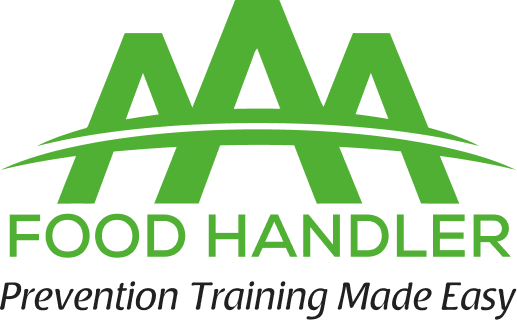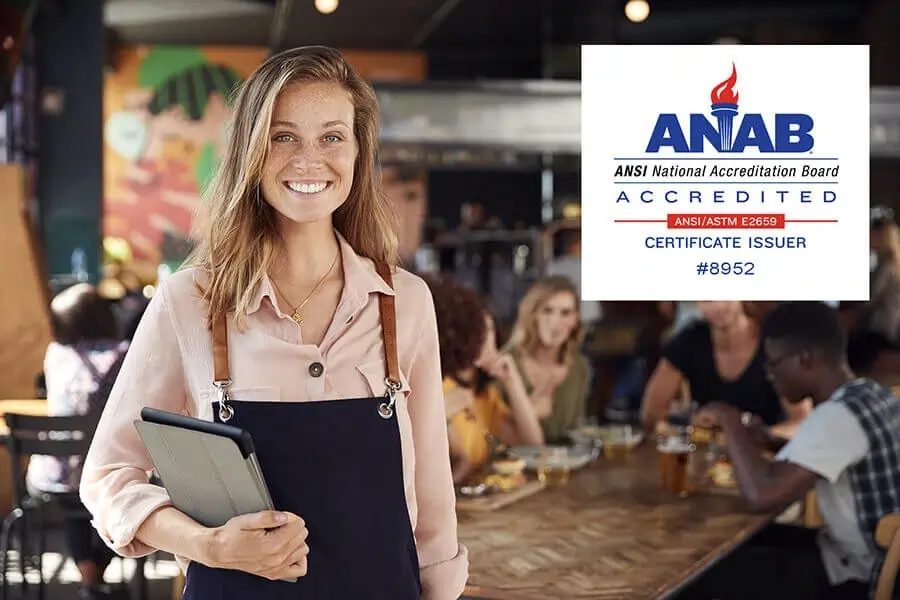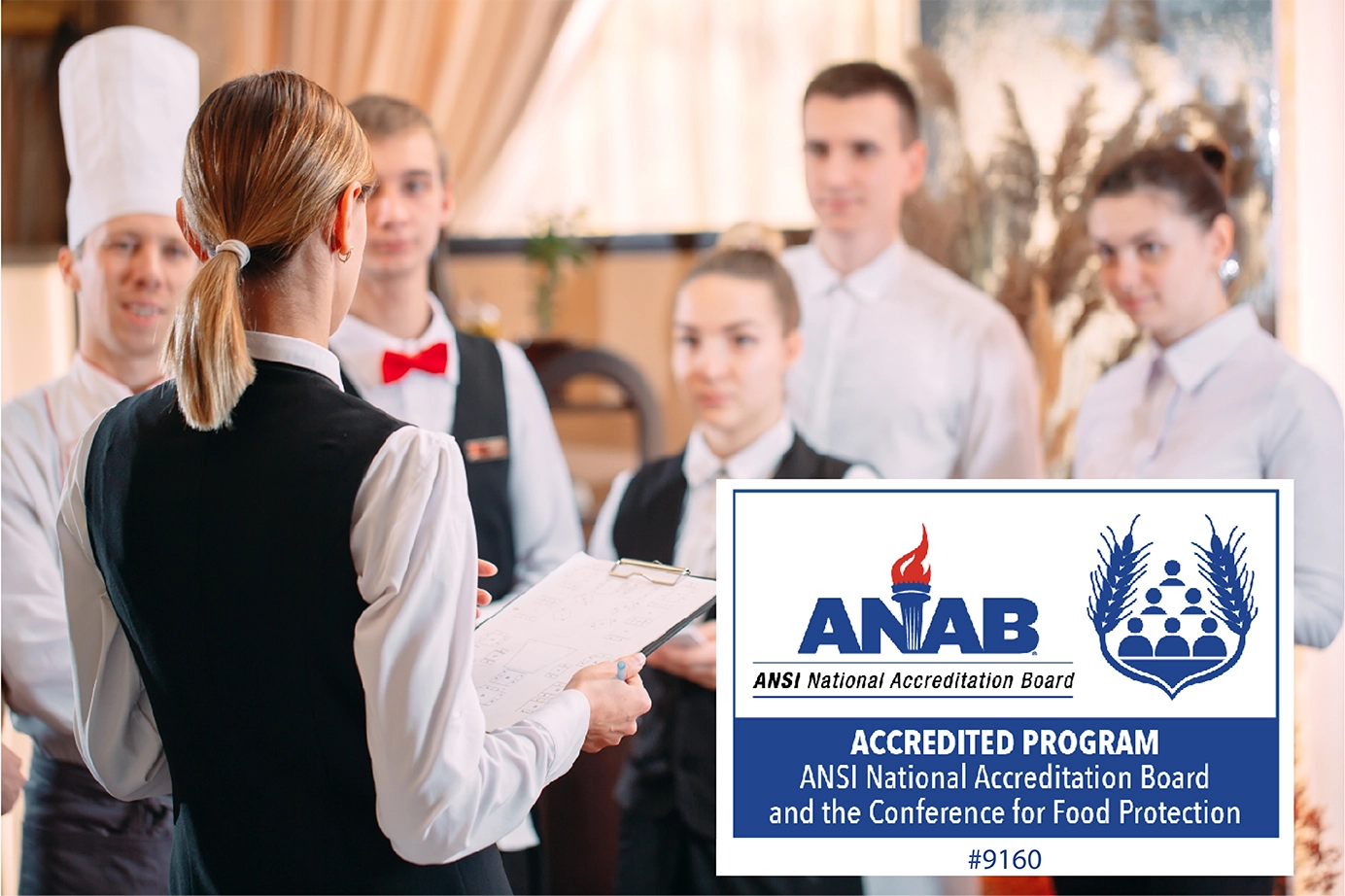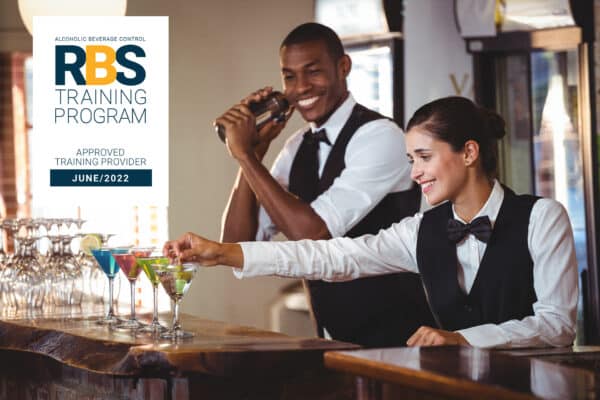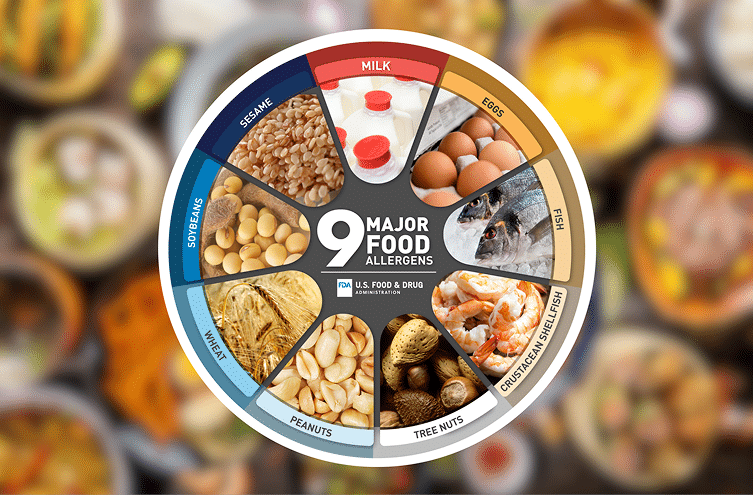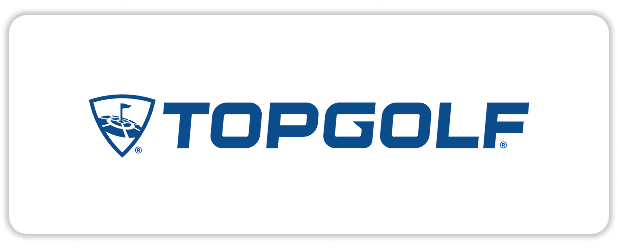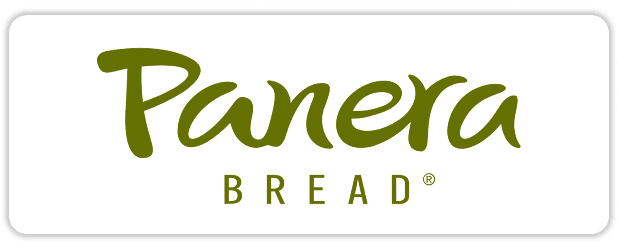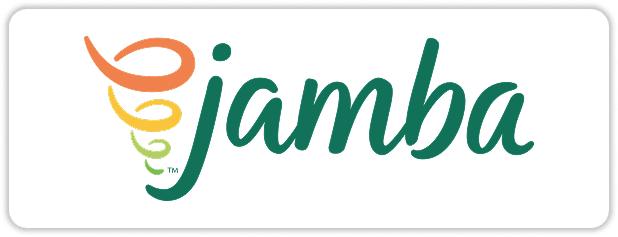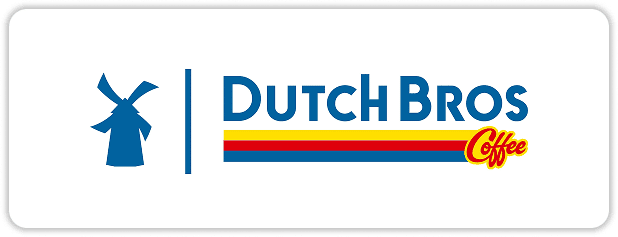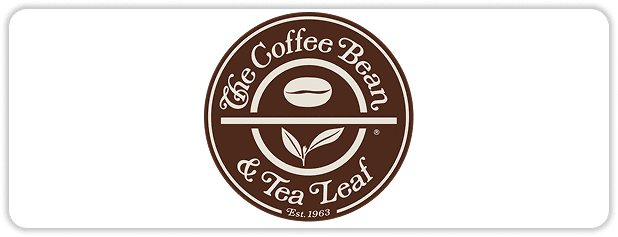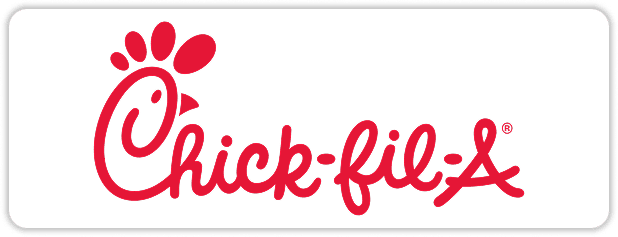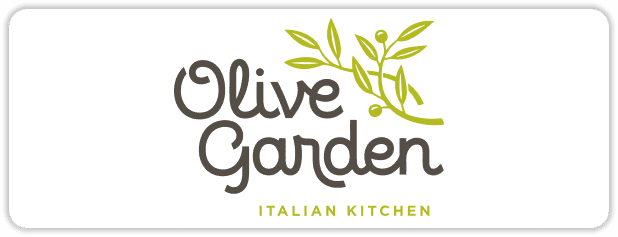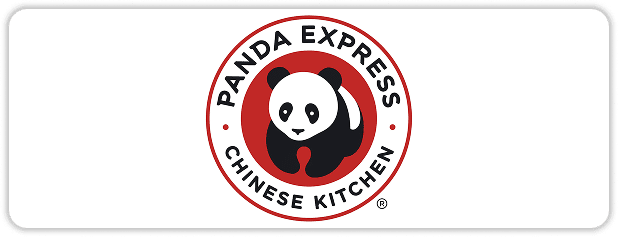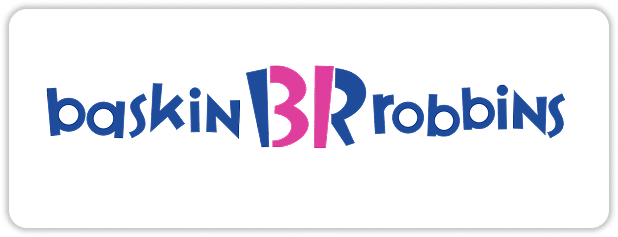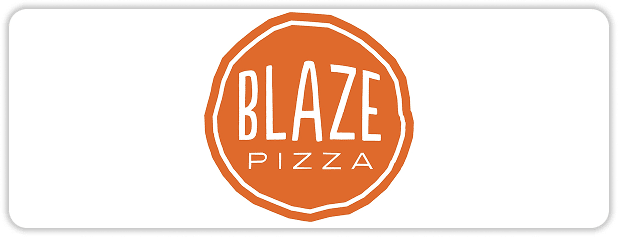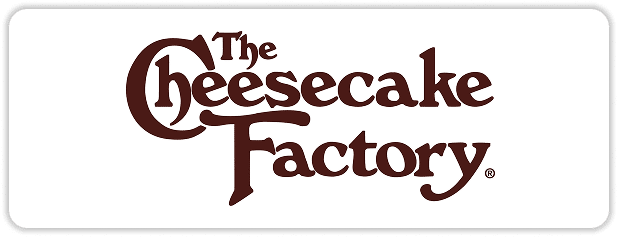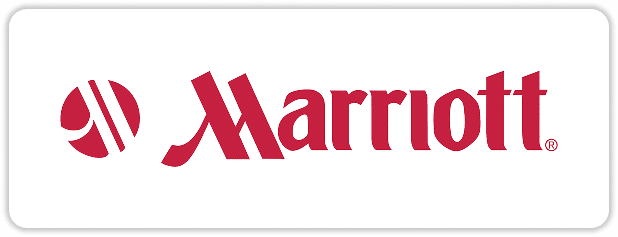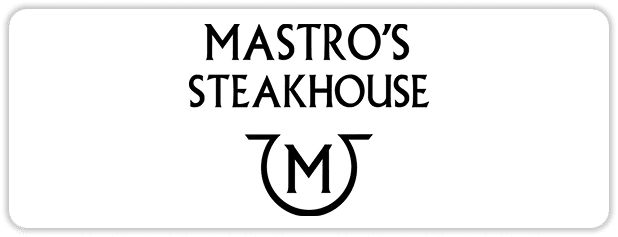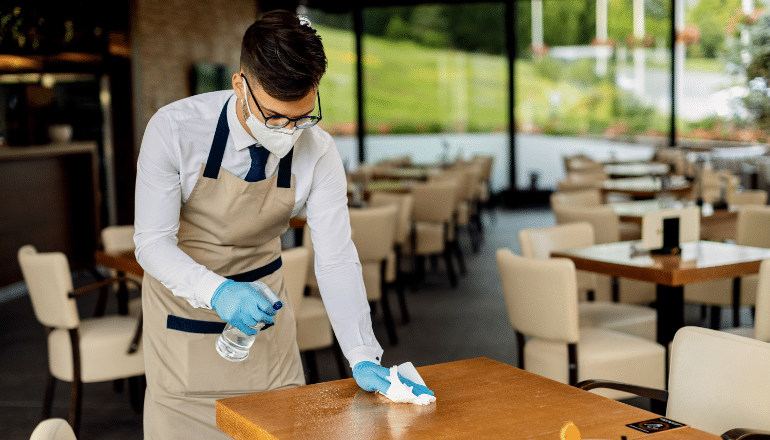
Restaurant Sanitation Tips to Protect Your Customers’ Health
Running a restaurant involves creating delectable dishes and ensuring the restaurant is clean and safe for customers. Maintaining proper sanitation measures is critical in protecting your customers’ health, building your restaurant’s reputation, and complying with local health regulations.
In this blog, we will discuss the essential restaurant sanitation tips that every restaurant owner should know to create a safe and clean environment for their customers.
Restaurant Sanitation: Understanding Health and Safety Procedures For Restaurants
As a restaurant owner, you must understand the health and safety procedures that apply to your establishment. Familiarizing yourself with local and national health regulations will help ensure your restaurant complies with food safety standards. In addition, health and safety regulations are in place to protect the public from foodborne illnesses and other health hazards.
Some essential health and safety procedures that restaurant owners should follow include:
- Properly storing and labeling food items
- Maintaining proper hygiene
- Keeping the restaurant clean and pest-free
- It is also essential to have a plan in place to handle food safety incidents and emergencies
How to Run a Clean Restaurant?
Keeping a restaurant clean is crucial to prevent the spread of harmful pathogens that can cause foodborne illnesses. Consider these helpful tips to ensure a safe and hygienic environment in your restaurant.
Create a Safe Environment
Creating a safe environment for your customers starts with preventing foodborne illnesses. Here are some essential tips for creating a safe environment in your restaurant:
- Use gloves and hairnets when handling food.
- Properly store and label food items to prevent cross-contamination.
- A thermometer ensures accurate temperature readings.
- Keep raw and cooked food items separated.
- Train staff on proper food handling and sanitation practices.
Create a Cleaning Schedule
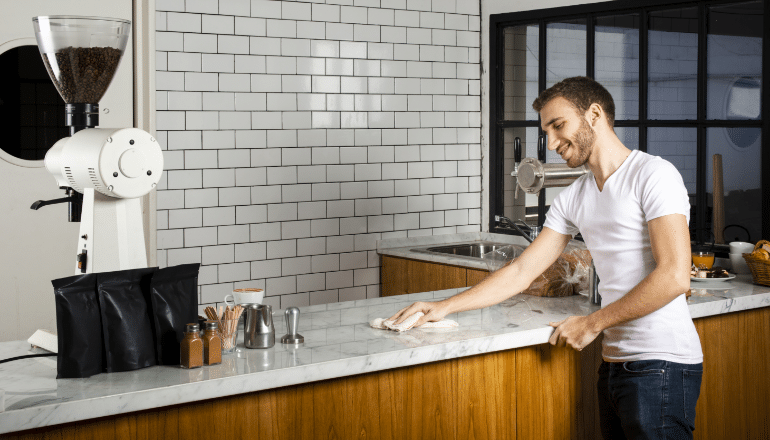
Creating a safe environment for your customers starts with preventing foodborne illnesses. Here are some crucial guidelines for establishing a secure setting in your restaurant:
- Daily tasks: wiping down surfaces, mopping floors, cleaning restrooms, and sanitizing kitchen utensils.
- Weekly tasks: deep cleaning kitchen equipment, cleaning vents, and wiping down walls.
- Monthly tasks: cleaning and sanitizing the ice machine, cleaning grease traps, and cleaning behind equipment.
Train Staff to Prioritize Food Safety
Proper training is critical in ensuring your staff understands food safety’s importance. Here are some essential topics that should be covered in food safety training:
- Personal hygiene practices, such as washing hands and using gloves.
- Proper food handling techniques, including storing and labeling food items.
- The importance of maintaining a clean and sanitary restaurant.
- How to handle food safety incidents and emergencies.
AAA Food Handler offers an ANSI National Accreditation Board (ANAB)-Accredited food manager and food handler program to help you train your staff on proper Restaurant Sanitation.
Follow Food Safety Guidelines
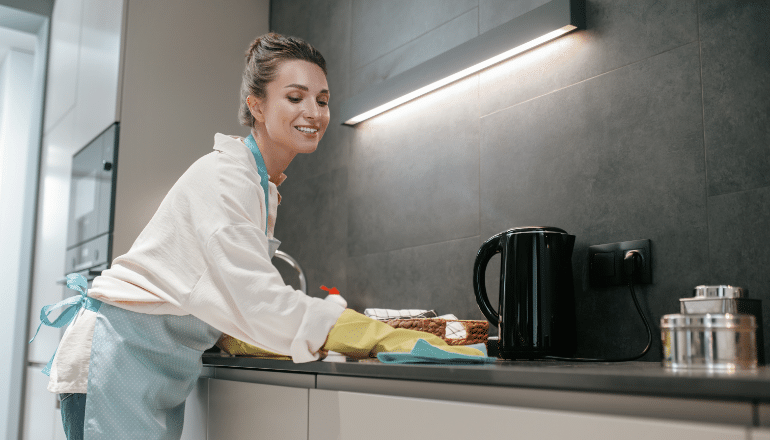
Following food safety guidelines is essential in preventing foodborne illnesses. Here are some essential food safety guidelines that every restaurant owner should follow:
- Store food at the appropriate temperature to prevent bacterial growth.
- Cook food items to the appropriate temperature.
- Keep raw and cooked food items separated to prevent cross-contamination.
- Properly label and date food items to ensure they are used before expiration.
Reimagine Your Restaurant’s Layout with Restaurant Sanitation
- Create a designated area for food preparation and handling to reduce the risk of cross-contamination.
- Install hand washing stations throughout the restaurant to encourage customers and staff to practice good hygiene.
- Rearrange tables and chairs to create a more spacious environment and allow for proper social distancing.
- Upgrade kitchen equipment to improve efficiency and reduce the risk of foodborne illnesses.
Communicate Your Commitment to Health and Safety
Communicating your dedication to maintaining health and safety standards can help establish trust with your customers and cultivate a favorable reputation for your restaurant. Here are some essential tips for communicating your commitment to health and safety:
- Display signage throughout the restaurant that highlights your sanitation and safety protocols.
- Use social media and email newsletters to communicate your commitment to health and safety to customers.
- Train staff to communicate your commitment to health and safety to customers.
How to Make Restaurant Cleaning Second Nature with AAA Food Handler?
AAA Food Handler’s food safety programs cover essential topics, including cleaning and sanitation practices, personal hygiene, and cross-contamination prevention. Enrolling your staff in AAA Food Handler’s programs can equip them with the necessary knowledge and skills to maintain a clean and safe restaurant environment.
For More Updates, Follow Us on Facebook.
